| Submitted by: Dieter.Wolf@DNSint.com [19 Dec 06] |
|---|
I got a good night some days ago which I would like to share with you and
people visiting your website.
2006-12-14, 22-24h CET; MEADE LXD55 SN-10 with ToUCam SC1 at prime focus;
K3CCD plus PaintShop pro
M1 - 'Crab' nebula in Gemini; this time I could work out the structures
within the nebulosity (vs. last try in your archive 2006) 35x20s exposures
|
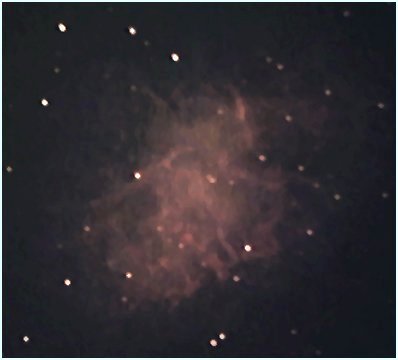
|
|
M78 - the brightest reflection nebula in the sky (two 10m, one 13m early
B-stars illuminating it) in Orion; I could see it well with the 24,5mm
SWA, but 'bright'... 25x20s exposures
|
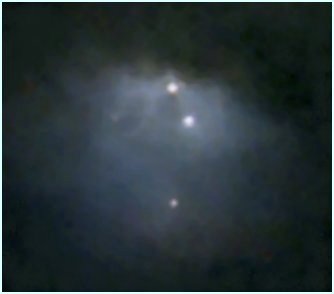
|
|
M42 - of course - in winter season you have to honor this most beautiful
nebulosity in Orion; the small field of view of my webcam is far off from
showing the whole thing (that's for your D70's chip size) so I focussed on
the central parts with 'chaotic' colors, bright emissions and dark lanes
45 exposures between 1...30s each
|
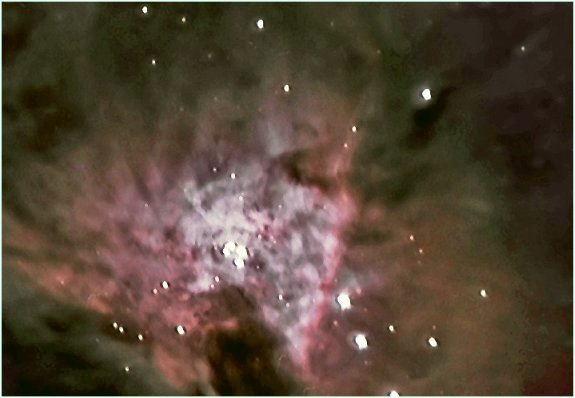
|
cs to all of you and a 'Merry Xmas'
when I returned home from work this evening I found the newest edition of
German Astronomical Magazine 'Sterne und Weltraum' in my letterbox and it
has an article about supernovae and pulsars - describing M1 too.
I learned from that article that you can see in the picture I sent you the
pulsar within Crab Nebula, only about 30 km in diameter but with the mass
of about two suns. When it exploded in 1054 it was brighter than Venus and
could be seen during daylight. After ejecting what we see as Crab Nebula
today all that's left is a 16m very compact, very small, very hot neutron
star - the first and may be only one I ever managed to photograph.
This is the - turned around to match 'standard orientation' and once more
contrast enhanced - picture of 2006-12-14, 22:30 CET, LXD55 SN-10 with
ToUCam SC1, 35x20s exposure.
Lucky having done it.
|
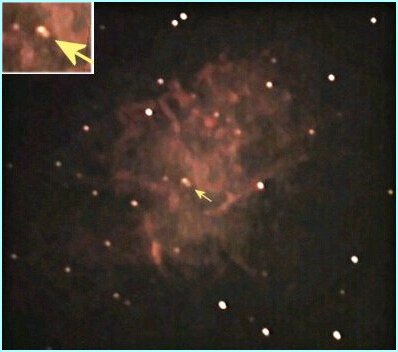
|
| Submitted by: Dieter.Wolf@DNSint.com [27 Nov 06] |
|---|
let me go into raptures over this night of November 15th. Between a low
pressure system just leaving central europe and a high pressure system
arriving this was the night of nights. Fst can't describe it, because
everything beyond 5m is incredible from my garden in the outskirts of a
million people city. Despite my three city lights I saw h & chi Persei
with the naked eye and I saw M33 in the telescope (which I never did before
from that location) A night you should not go to bed - but I had to go to
work the next day. So I decided on two objects for that night: M76 & M45
M76 - one of Messier's weaker objects: It is easy to see the 'cork' of this
10m.1 visual / 12m.2 photographic, small planetary standing close to zenith
in Perseus this night. I could catch the 16m.6 central star
photographically and a bit of the much weaker, outer side nebulosity. But I
was really astonished to see the whole 'butterfly' in a contrast enhanced
black and white negative. 2006-11-15, 22:30 CET, LXD55 SN-10 with ToUCam
SC1 at prime focus, 70 pictures out of three avi's with 30/20/10s frame
exposure time added to a final picture (about 25 minutes total exposure
time) I had enough frames to pick only the well guided.
|
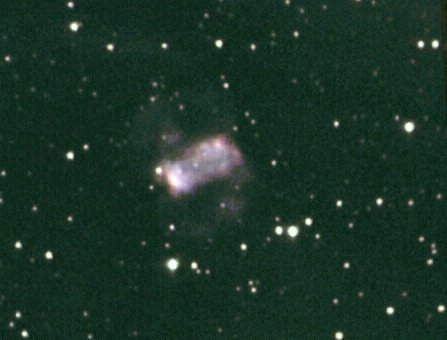 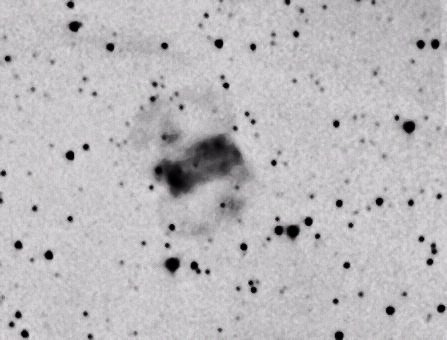
|
|
Then I mounted my bridge digital camera piggy-back onto the scope (which
you see in the left down corner) A single shot at 35mm, ISO400, f3.6, 60s
showing the Plejades and Hyades. Automatic focus did not work properly.
|
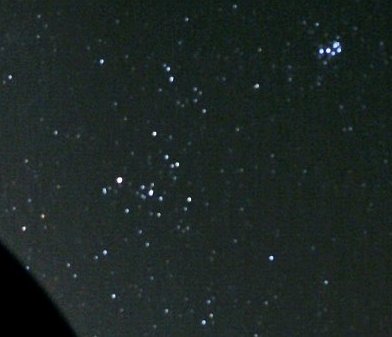
|
|
And this is what I could get out of 420mm, ISO400, f3.6, 10x60s -darkframe
with exact manual focussing, guided by the LXD55 and reworking to bring up
beautiful nebulosity around the stars. This is not through a telescope,
just a bridge digital camera and a beautiful sky.
|
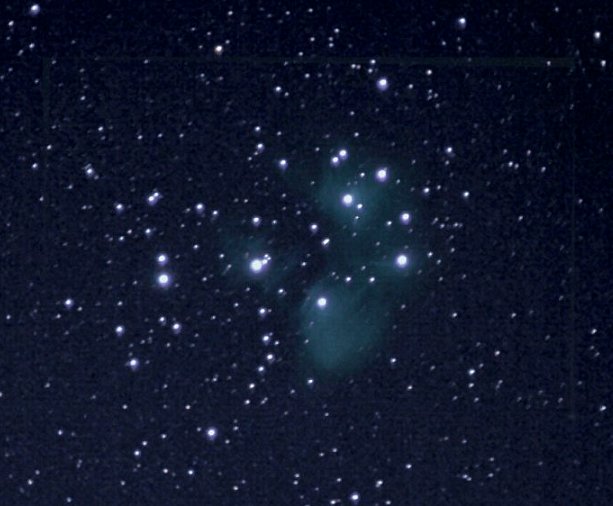
|
Wished I could have more of these nights...
Dieter (Munich, Germany)
|
| Submitted by: Dieter.Wolf@DNSint.com [16 Sep 06] |
|---|
congratulations for 10 years anniversary of ETX site (and 4 years
anniversary of LXD site) where you provided all of us a full bunch of
information and the possibility to share our ideas and enthusiasm in
amateur astronomy. Thank you Mike.
I did a rework of three nights sessions with 'great globular cluster in
Hercules - M13' in 2005 and 2006.
With 5 second exposures I got the most prominent stars, with 15 second
exposures the core and with 30 second exposures the weaker outer parts.
Combining together into a final picture with contrast and sharpness
finetuning. It's impressive - not my picture - but to imagine that each
pixel of light you see represents at least one star. And there are some
hundreds of thousands in M13.
MEADE LXD55 SN-10 with PHILIPS ToUCam SC1 at prime focus, out of 250 frames
I selected 35x5s & 30x15s & 35x30s added to a total exposure time of about
25 minutes
Clear skies to all of you,
|

|
| Submitted by: Luan Carli (l.carli@juliacom.it) [6 Sep 06] |
|---|
|
I post this photo of M13 (it's my first deep sky image) taken with my Meade LXD75 SN 8" and Canon EOS 350D.
I took this picture from my backyard with a big light pollution and a quarter moon.
It' s very interesting to see the faint NGC 6207 galaxy considering only 30 sec. exposure (at 1600 ISO).
The original image was treated with IRIS to remove the sky background, auto dark subtract from the EOS camera and some contrast adjustment in photoshop.
|
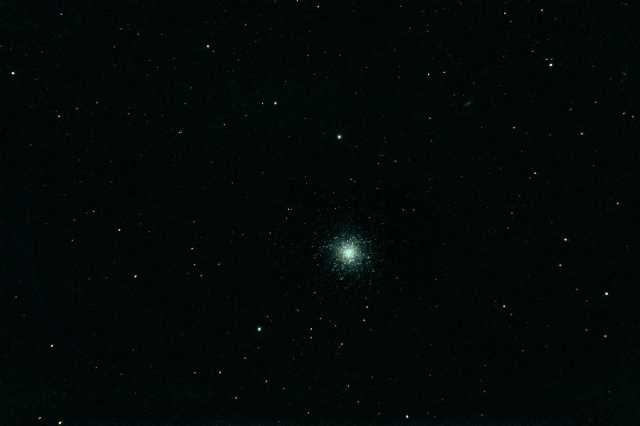
Click image for full size version
|
| Submitted by: alexconte@alice.it [31 Aug 06] |
|---|
|
this is my very first attempt after having fixed the slipping encoder weel, last month.
The picture is a sum of seven 120 sec., ISO 800, exposures taken with a 70-300mm F5.6 second hand (some of the internal lenses are misaligned) Canon zoom on a Canon ESO 350d camera body piggy backed on a Meade LXD75 SC8 and autoguided with a Meade LPI.
Aligned, stacked, enhanced a resized with Iris.
Thanks once again for your former support.
|
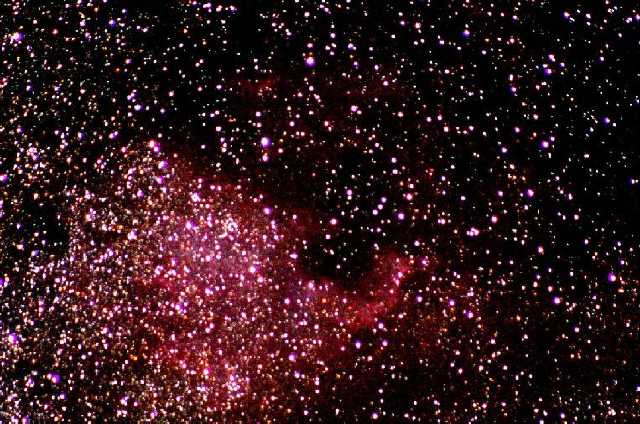
|
| Submitted by: Alexander Wilson (esraguin@googlemail.com) [20 Aug 06] |
|---|
|
This image of m13 was 82 frames stacked in registax
and histogram in pixlnsight , exsposure time was 5.7sec per frame . IT was my lxd55 sc8in scope and image was taken with my lpi.
i
have found out not to use to much exsposure with star fields
|
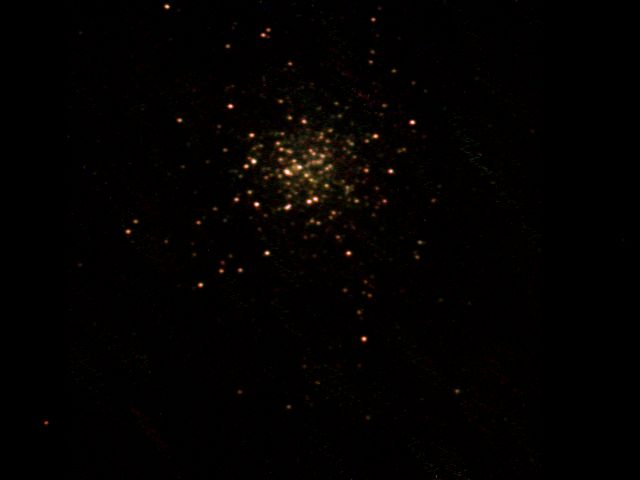
|
| Submitted by: Dieter.Wolf@DNSint.com [12 Aug 06] |
|---|
Today I want to share two pictures with you and colleagues visiting your
site. One is the 'Hourglass Nebula' in 'Lagoon Nebula' - M8. A great view
if you go for holidays to southern countries and I have seen beautiful
photographs of it. In my location the maximum possible size above the
horizont is about 17 degrees; that means there is ONE viewing spot across
the street between two neighboring houses 'guided' by two street
lights...you know what I mean!
Nevertheless I caught it a really clear summer night; not a 'nice picture'
but happy to have done it. M8; 2006-07-20, 01:00 CEST, LXD55 SN-10 with
ToUCam SC1 at prime focus, 45 out of 95 x 20s exposures
|

|
|
The second one is more a 'pretty picture'; M27 (high in the sky) I did a
composite of three night sessions (2x 2005 and 2006-07-12) to achieve a
total exposure time of about 40 minutes. The red color was relatively easy
to catch but the blue/green lines were harder and show the 'fringed' parts
of this beautiful nebula. I like it.
|
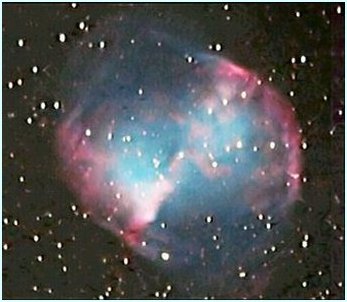
|
| Submitted by: Dieter.Wolf@DNSint.com [15 Jul 06] |
|---|
just before you leave for hollidays - wish you warm days and clear nights -
I have a little story to tell.
An Astronomer's Night
It was a warm, clear night on July 11th here in Munich, Southern Germany.
My wife and I sat in our garden and recovered from the heat of the day. The
weatherman called it a 'tropical night' - about 25C / 77F but that was
much less than the 33.5C / 92F we had during the day. Surprisingly there
were no thunderstorms - like the days before. So, while we nipped on our
glasses of 'Merlot', Jupiter started to appear and later 'Arcturus'. As it
got close to 11 p.m. local time I started to convince my wife that she had
to go to bed alone tonight (she's used to live with an astronomer...)
I set up my equipment and waited for the night to become 'really dark'.
Well, living in the outer parts of a million people city, 'dark' means you
have to turn your newspaper into the direction of the nearest city light to
continue reading and of course 'dark' in the short summer nights means a
'pale grey'. And - to make it even more dramatic - it was a full moons
night. Nothing of that really bothered me. So it's not gona be the weak
galaxy but there are beautiful bright summer objects waiting - like M57,
the 'Ring Nebula' in Lyra, close to zenith around midnight.
I took four avi's that night and while the AutoStar was tracking I set back
in my chair, looked into the skies and started to walk out there with my
thoughts. Where does all that come from, did someone create it or is it
simply there? The white dwarf central star may be 10 billion years old -
what was 10 billion years ago? And the vanishing ring materia - which star
or planet will it form in 10 billion years from now? Take my advice: don't
stare into your computer's lcd, let your eyes and mind (or even spirit)
walk around the beautiful night sky!
Got into bed at 2 o'clock in the morning and had to wake up at 6 (terrible)
Home again - this evening with thunderstorms - I worked for three hours on
my nightly result which I now proudly present. I know the limits of my
doing, but that's not important. You have seen it with your own eyes, you
caught it with your own equipment, you experienced that beautiful,
satisfying feeling.
2006-07-12, 00:30 CEST; MEADE LXD55 SN-10 with ToUCam SC1 at prime focus;
75 frames out of 200, exposed between 6 and 12s each (about 10 minutes
total exposure time), darkframe
cs to all of you,
Dieter (Munich)
|
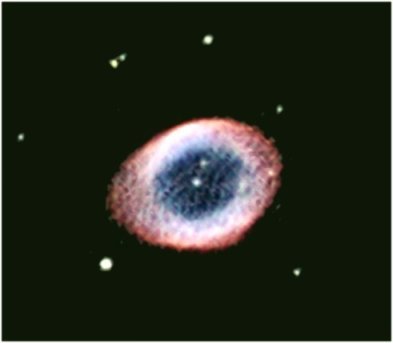
|